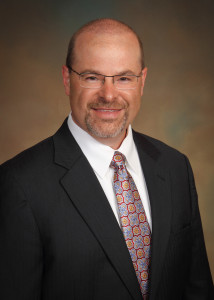By: Mary Kate Pedigo, CCC, Sam Houston Electric Cooperative

What’s your educational background?
I have a bachelor’s degree in communications from the University of Tennessee. I am also a graduate of NRECA’s Management Internship Program.
What made you decide to earn your CCC? When did you earn it?
At the time, I was the communications coordinator at Middle Tennessee EMC. While I already had a 10-year career in journalism, public relations, marketing, etc., I did “grow up” in the electric utility business, so I wanted to better credential myself for my job.
What role were you in at your Co-op prior to being named president?
I was the leader of a department, and my title was vice president of communications and member services. The responsibilities within this department included internal and external communications, community relations, residential energy services, commercial and industrial energy services (key accounts), contact center and customer information system quality control. I came to this role from my first role at the co-op – communications coordinator.
How has your background in communications shaped or influenced your leadership at MTEMC?
If I’ve been successful as MTEMC’s leader, I think most of the credit would go to my communications background. I draw from it consistently. I feel like I could say a lot here, but – appropriately – I’ll keep it brief. Effective communications simplifies the complex. A holistic approach I hope to bring through leadership is an emphasis toward simplification. We’ve made it an organizational emphasis – from simplifying mission and vision to emphasizing simplicity in our technology implementations and member service processes. Relational communication is fundamentally important, and I think my communications background gives me a particularly keen awareness of this and a proclivity for it.
What has been one of your biggest communications challenges as president? How did you overcome it?
A major organizational re-alignment (or reorganization) is uncommon among electric cooperatives. We had never undertaken one here, but it was time to do so in 2015. Communicating something so complex yet so delicate was among the biggest communications challenges I’ve faced so far. There was a need for confidentiality, and that had to be balanced among personal sensitivities, fairness, the good of the whole and our organizational value of transparency.
Without naming names to positions, this discussion began with our board of directors in a strategic planning session. The re-organization was top-down, and it came in two phases – one in the winter and one in the spring. The first phase meant changes that would be felt most at the senior level. Some among the senior team were being promoted to higher levels, some were staying where they were, and some would be reporting to those who had been promoted to higher levels. While all would remain members of the senior leadership team, things would be different. I had to create a communications plan where timing was critical, information had to be thorough and specific, and the process would carefully take emotional considerations into account. That meant a few one-on-one meetings before the fact, a team meeting where everything would be laid out, and then more one-one-one meetings immediately after the announcement. That was a coordinated and careful effort, and it was soon followed by organization-wide communications. Though directly impacting senior staff, the indirect impacts were across the organization. It also signaled a period of change…and, in the spirit of transparency, the announcement of another step of re-organization to come. The realignment was not about a reduction in force, and I communicated that from the start…and repeatedly as phase two approached.
Phase two was more detailed and sweeping, and the communications had to correspond. While only I and two other staff members worked on assembling the particulars for phase one, the entire senior leadership team worked to assemble phase two. This created the need for robust but highly confidential discussions. Once we came to a plan for the structure, we had to create the corresponding plan for communications. Again, once the day of the announcement was set, it would require one-on-one or small-group discussions before the fact. This was a carefully coordinated effort involving all the senior leadership team members over two days. At the end of the second day, organization-wide communications were sent to the entire employee team, board members and even retirees. There were additional carefully crafted communications over the following days to reiterate the rationale of the change and to offer support for any who had questions or concerns.
This was significant change for our organization, but we stand today better structured for our future and with very strong buy-in across the board. To me, our success in execution of the communications plan was because of the consideration shown through the private, face-to-face meetings, and the honest and genuine nature of the communications at every level.
